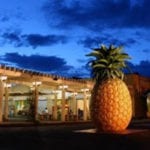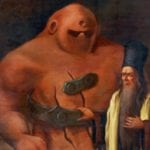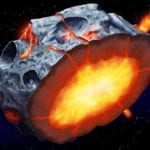 History
History  History
History  Movies and TV
Movies and TV 10 Fictional Portrayals of Area 51
 The Arts
The Arts 10 Incredible Works of Art in Unexpected Places
 Weird Stuff
Weird Stuff 10 Road Races with No Route and No Rules
 Crime
Crime 10 Real-Life Crimes Inspired by Fiction
 Pop Culture
Pop Culture 10 Characters Who Feel No Pain
 Space
Space 10 Crazy Ideas for Colonizing Outer Space
 Animals
Animals History’s Ten Most Heroic Horses
 Health
Health 10 Severe Medical Conditions with Surprising Health Benefits
 Travel
Travel 10 Unique Speakeasies Around the World
 History
History 10 Nonviolent Actions Against the Nazis That Proved Effective
 Movies and TV
Movies and TV 10 Fictional Portrayals of Area 51
 The Arts
The Arts 10 Incredible Works of Art in Unexpected Places
Who's Behind Listverse?

Jamie Frater
Head Editor
Jamie founded Listverse due to an insatiable desire to share fascinating, obscure, and bizarre facts. He has been a guest speaker on numerous national radio and television stations and is a five time published author.
More About Us Weird Stuff
Weird Stuff 10 Road Races with No Route and No Rules
 Crime
Crime 10 Real-Life Crimes Inspired by Fiction
 Pop Culture
Pop Culture 10 Characters Who Feel No Pain
 Space
Space 10 Crazy Ideas for Colonizing Outer Space
 Animals
Animals History’s Ten Most Heroic Horses
 Health
Health 10 Severe Medical Conditions with Surprising Health Benefits
 Travel
Travel 10 Unique Speakeasies Around the World
10 Intriguing Facts About The Philippines
The Philippines is truly an amazing country. As small as it is, this nation of nearly 100 million people has made its impact felt throughout history, from being the first democracy in Asia to fighting side by side with the US against the Japanese in World War II. Even with the current problems plaguing the country—such as the never-ending natural disasters and territorial tiffs with a certain superpower—the Philippines and its people continue to stand firm in the face of such adversities. Without further ado, here are some fascinating facts about one of the world’s most awesomely underrated places ever.
10 Manny Pacquiao Punches Crime Rates Down

Who hasn’t heard of Manny? The prized pugilist and the Philippines’ favorite son holds so much sway over his countrymen that he has been known to stop crime single-handedly. You see, whenever the Pacman has a fight, the entire country grinds to a halt. The people are either tucked away at their TV sets at home or in public places where the government has set up a free televised broadcast. The audience, of course, includes the criminals, which leads to very low or occasionally zero criminal activity during the fight.
Insurgents have also been known to drop their subversive activities just to watch him fight. In fact, Muslim rebels and government soldiers had an unprecedented moment of solidarity when they came together and watched Manny’s fight with Shane Mosley back in 2011. Whenever he wins, the whole country erupts into jubilation. His recent win over Brandon Rios gave a much-needed respite to his countrymen who were struck by Typhoon Haiyan.
9 Freemasons Fought The Spanish Empire
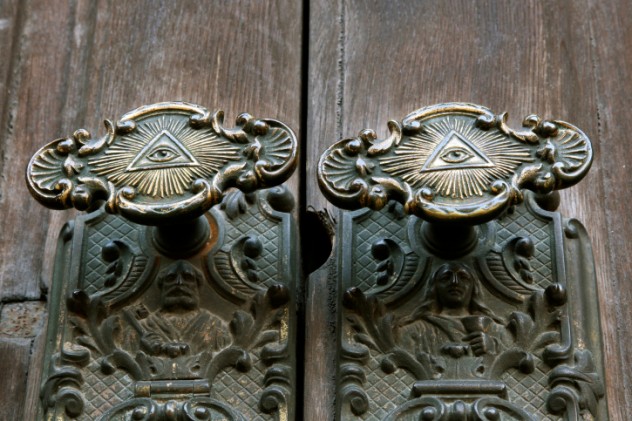
This was one conspiracy the Freemasons could not deny to have participated in, as several Filipino members figured prominently in the revolt against Spain in the late 18th century. Interestingly, it was the Spanish who first introduced Freemasonry to the Philippines in 1856, who were soon followed by other European nationalities. These lodges typically excluded the natives from joining and it was only in 1889 that an all-Filipino lodge was formed in Madrid. Filipinos who went overseas to study or avoid persecution joined Freemasonry mainly because it embodied the ideals of justice, freedom, and equality of all people.
The secrecy and connectedness among the lodges allowed the Filipino members to share and spread their liberal ideas. A number soon returned to the country and set up lodges everywhere, which alarmed the Spanish authorities and especially the friars who demanded complete obedience to the church. Those suspected to be Freemasons were persecuted mercilessly.
However, even the threat of torture and death did not stop the members from sharing their views for a democratic and just society. Soon, two schools of thought emerged within the confines of the lodge—one espoused peaceful reforms and reconciliation with Spain and was headed by Dr. Jose Rizal, and the other advocated violent revolution, which was led by Andres Bonifacio. Both had formed clandestine groups that closely followed the rituals of Freemasonry. When it became clear the Spanish were never going to implement peaceful reforms, Bonifacio and his group, the Katipunan, went ahead and openly revolted. Rizal—who had reservations about the revolution but tacitly supported it in the end—was later executed by Spanish authorities, which only served to inflame the revolutionaries even more.
8 A Dangerous Place For Journalists
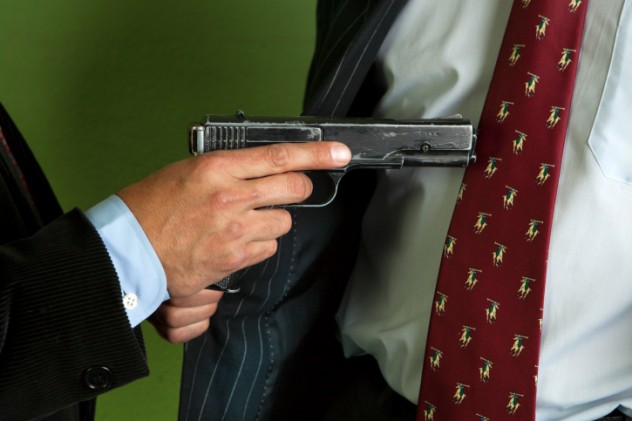
Sadly, one of the most democratic places in the world also happens to be one of the most dangerous for journalists. In its 2013 report, the Committee to Protect Journalists (CPJ) ranked the Philippines third on its Impunity Index, which is the number of unsolved journalist murders per population. The Philippines had a score of 0.580, or 55 journalists killed in a population of 94 million people. This score was bested only by Iraq and Somalia. It’s pretty surprising when you consider that the country isn’t even in a civil war, like Somalia, nor is it as insurgency-infected as Iraq.
Even sadder is the fact that journalists continue to be killed today with increasing impunity. In 2013 alone, the police documented three murders of journalists, although that number could be higher. To put the depressing icing on the depressing cake, the wheels of justice circle ever so slowly for the families of those journalists killed in the 2009 Maguindanao Massacre, which was one of the worst mass murders of media personnel in history.
7 A Gory Holy Week
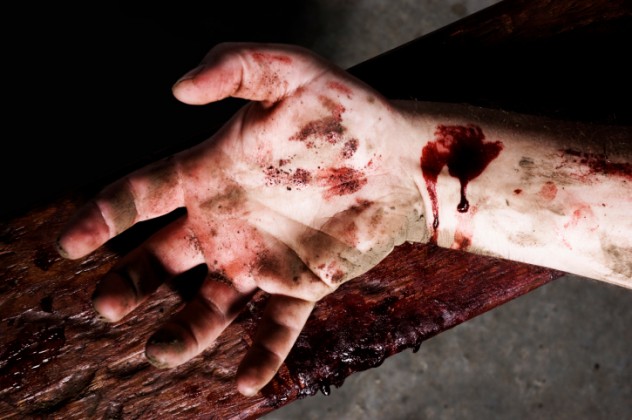
As a predominantly Catholic country, the Philippines faithfully celebrates Holy Week every year. However, aside from the normal customs of observing Mass, some Filipinos also practice Catholic beliefs that have been mixed with local customs. One such tradition that stands out is the penitensiya, or asking for forgiveness. In a gory spectacle of religious fervor, some of the penitents whip themselves bloody in the back to reenact the same suffering that Jesus endured while walking to his execution site.
If whipping oneself wasn’t enough, a penitent can also opt for crucifixion. Yes, people have voluntarily crucified themselves, and some have repeatedly done so for years. The Holy Week has become something of a tourist attraction and is even officially endorsed by the government. However gruesome this looks to outsiders, the ritual is totally voluntary—there are even cases of foreigners who have willingly joined the festivities to be whipped and crucified.
6 A Happy People

Have you ever wondered why—even in the midst of natural disasters, government corruption, and crushing poverty—Filipinos can still afford to smile and crack a joke? It has something to do with the national psyche. Similar to the French joie de vivre—a phrase that expresses enjoyment of life—Filipinos have their bahala na attitude that espouses living life to the fullest without worrying about the present because it will be soon gone anyway.
This also means a tendency to possess a positive outlook towards the future. For Filipinos, it doesn’t matter if they’re sick, jobless, or just plain down on their luck, because sooner or later their lot will surely improve. That attitude can be easily seen in the aftermath of major disasters like Typhoon Haiyan, where survivors pass the time by playing basketball amidst the ruins. This unwavering optimism has led to Filipinos being consistently ranked as one of the world’s happiest nationalities.
5 The Early Chinese And Filipinos Were BFFs
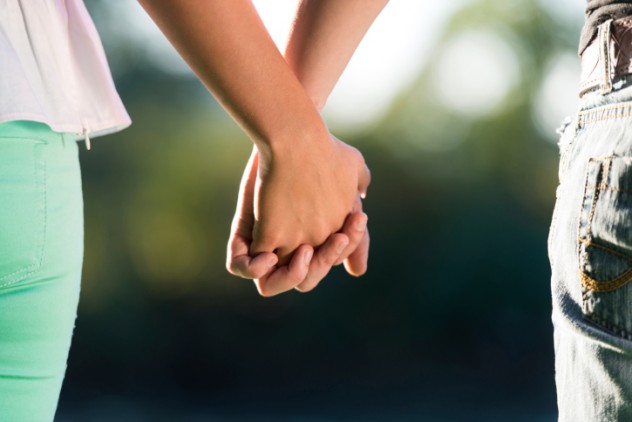
The ongoing territorial conflict between China and the Philippines can be best described as a fight between David and Goliath, only right now David has no slingshot and Goliath has a lot of tanks and missiles. The best that the Philippines can do is hope and pray for divine intervention—or America.
However, this potential powder keg for World War III obscures the fact that the Chinese and Filipinos were once the best of friends. The earliest known recorded contact between the two groups was in 982 AD—almost 500 years before the arrival of Magellan—when a boatload of Filipino merchants anchored off Canton, China and sold their goods there. After that fateful encounter, the Chinese sailed their own ships towards the Islands to trade with the natives, while some stayed behind and intermarried with the local women. They also taught the natives their language and instructed them how to manufacture items such as gunpowder and jewelry.
The Chinese influence is still pretty evident on the Filipino way of life even today, with the nonchalant use of Chinese words and eating of Chinese cuisine. Now the question is, can the Philippines and China ever be the best of friends again?
4 The Philippine Flag

The Philippine flag holds the distinction of being one of the most unique in the world. What makes it so different is that one can know whether the country is in a state of war by the way the flag is flown. If the dominant color flown on top is red, that means the country is at war. Likewise, if it is blue, then the country is at peace.
The idea for the modern Philippine flag’s design came in 1897 from General Emilio Aguinaldo, the de facto leader of the insurrection against the Spanish and the first president of the First Philippine Republic. Aguinaldo had signed a truce with the Spanish and underwent a self-imposed exile in Hong Kong. He presented the design to Marcela Agoncillo, her daughter Lorenza, and a young girl named Delfina De Natividad, who also happened to be the niece of national hero/martyr Dr. Jose Rizal. Together, the three sewed the flag, which was first flown on May 28, 1898, when Aguinaldo returned to the country to resume hostilities against the Spanish.
Originally, the sun in the flag had a face, but this was scrapped in subsequent designs. The red and blue colors of the flag are rife with symbolism. Some historians have argued that the colors were influenced by the Cuban flag, where the people were also revolting against the Spanish, while others have asserted that the colors paid homage to the Americans who assisted in ending Spanish rule.
3 The People Power Revolution
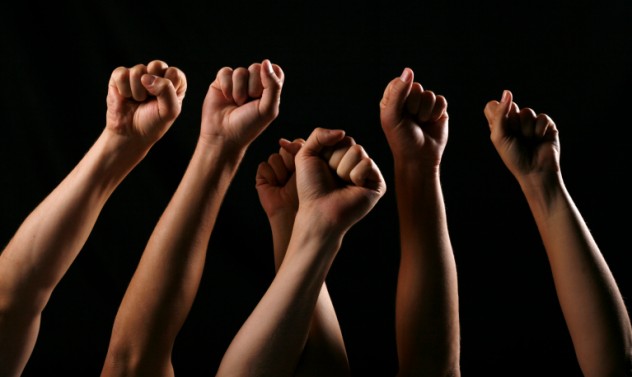
Back in the 1980s, Filipinos were getting tired of the antics of President Ferdinand Marcos—and honestly, who wouldn’t be? He had imposed martial law, made himself dictator for life, his cronies sucked the national coffers dry, and his men killed those whom he perceived as threats to his regime. Worst of all, his wife Imelda flaunted their ill-gotten wealth so openly it was like a slap to the collective faces of their countrymen who had to live in crushing poverty while seeing their country burn right before their eyes.
That decades-long resentment finally culminated in a revolution that started on February 22, 1986 and ended three days later with the dictator and his family high-tailing it out of the country. The aptly named People Power Revolution involved more than a million Filipinos from all walks of life who gathered on a major street near the presidential palace to demand the ouster of Marcos and to protect the government officials and soldiers who openly defected from the regime. It was nothing short of a miracle as government soldiers sent to quell the rebellion refused to shoot and soon joined the crowd. Sensing that the end was near, Marcos and his family fled their home and went to exile in Hawaii to the joy of the people. That revolution had a profound effect on the world, as folks from other countries with oppressive regimes would go on to form their own people power revolutions.
2 An Aborted Invasion Against Malaysia

From more than 300 years of Spanish colonization to 40-plus years of American occupation, the Philippines unfortunately has been on the receiving end of a lot of foreign invasions. No one would ever expect a country that has historically defended itself from external aggression to plan an invasion of its own. But surprise, surprise—the Philippines actually almost carried out an invasion attempt against neighboring country Malaysia.
In the 1960s, President Ferdinand Marcos—who would later declare martial law and become dictator—sanctioned Operation Merdeka to retake nearby Sabah (North Borneo) from the Malaysians. That particular piece of resource-rich area had been a flashpoint of contention between the two countries for decades and Marcos decided it was high-time the Philippines took it back. He had his men recruit Muslims from the southern regions and trained them as commandos in the island fortress of Corregidor near Manila.
Non-payment of salaries and a refusal to fight their Muslim brethren later spurred the recruits to mutiny. To keep the failed project under wraps, government handlers killed all 150 recruits, save for one who managed to escape and spill the story to the media. Revelations about the plot worsened relations between the Philippines and Malaysia and later became the rallying point for a major rebellion for Muslim insurgents in the South.
1 The Longest Christmas Ever
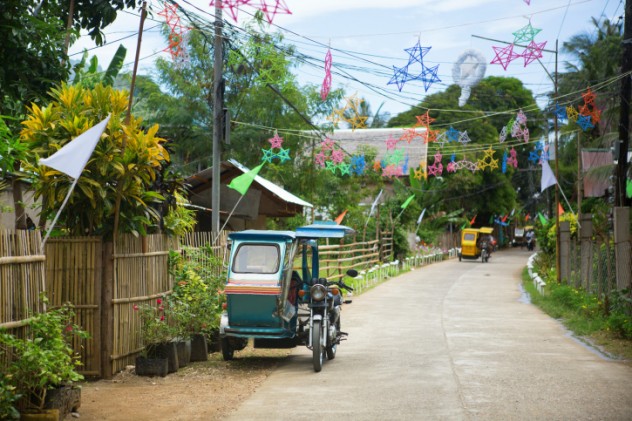
Along with Holy Week, Christmas is another celebration that Filipinos love to observe. The Yuletide season usually begins in September and ends in January, making it the longest celebration of Christmas ever. During this time, public establishments and individual homes would already set up Christmas decorations and belt out Christmas jingles.
There are many religious activities within the Christmas season that Filipinos celebrate with wholehearted devotion. One very odd custom is the Simbang Gabi, or Night Mass, where Filipino Catholics attend nine services in a row leading up to Christmas Eve. If the person can attend all nine masses, then it is said that his wish will be granted. On Christmas Eve, Filipino families usually come together and celebrate Noche Buena, a large dinner not unlike Thanksgiving and where people gorge themselves on a smorgasbord of native food.
Christmas officially ends with the celebration of the Feast of the Three Kings on the first Sunday in January. Those who feel that Christmas is still too short need not despair, as festivals are a dime-a-dozen in the country. There’s already a religious festival just a few days after the end of Christmas.
Marc V. dedicates this list to the great people of the Philippines, especially to those hit by one of the strongest typhoons in history. Yes, the country is far from perfect, but he loves it anyway and knows that the future ahead remains bright for his countrymen, disasters be damned. Mabuhay!
Again, for a conversation about anything, please do drop him a line sometime.
